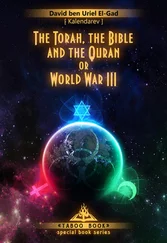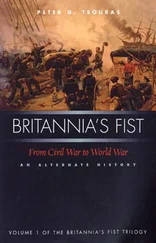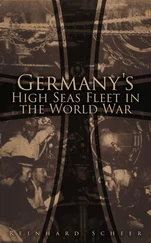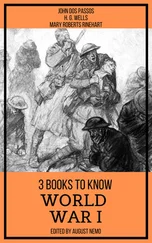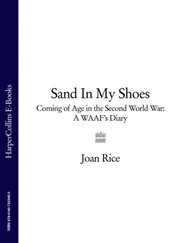The coordinating authority for the tank production project was nominated as the AFV Section of the Ordnance Production Directorate, and the contractors initially selected were:
Hull & turret castings: Bradford Kendall, Sydney; Chas Ruwolt, Melbourne
Suspension gear & tracks: McKay Massey-Harris, Melbourne
Gearbox: Sonnerdales, Sydney
Transfer case & axle: Coote & Jorgensen, Sydney
It still seems unlikely that the Army and the Directorate AFV had arrived at a definitive specification. This became evident at a meeting convened on 30 April 1941 at Victoria Barracks, Melbourne, to discuss munitions production generally and the production of tanks in particular.

Essington Lewis was Managing Director or Chief General Manager of BHP from 1926 to 1950, and thereafter Chairman. He was appointed Director-General of Munitions in May 1940, and his forceful personality ensured the efficiency of his department (AWM 077691).
The Minister for the Army, Percy Spender, chaired the meeting and its participants included the Minister for Munitions, Senator McBride; tank design expert Colonel Watson; the DCGS, General Northcott; the Master-General of the Ordnance, General Milford; Director-General of Munitions, Mr Essington Lewis; the Director-General of Ordnance Production, Mr Hartnett; and several others. The transcript of their discussions runs to ten pages. 19It is a very important element of the story of Australian tank production, and some of the most significant exchanges are reproduced. The first person to speak after the opening was Colonel Watson:
COLONEL WATSON
Our forecast of the position in regard to tanks is substantially correct. The design is complete, but there may have to be modifications to meet manufacturing needs. We have detailed drawings of all parts which are going to take a long time to produce. I can see no reason why we should not go into production of major parts, such as transmission gears and suspension. I do not think there has been any delay in design as we have fulfilled our prophecy that drawings would be ready by the 1st May. Our design is for a very heavily armoured cruiser.
MR SPENDER
Have there been any alterations in design brought back by Colonel Milner? 20
COLONEL WATSON
Only a few minor alterations in design to the track and the turret. It is quite right to say that with the exception of the track there have been no important changes. The armour and armaments are the same as proposed. Armour is the principal problem today. I believe the difficulty in production of armour is on the metallurgical side. I am going to Newcastle on Friday to see a pouring of armour on a new formula which has been developed here to make the armour without nickel, in regard to which I believe the position is very difficult.
COLONEL MILNER
Variations in design brought back from the USA affect only the track and turret fittings.
COLONEL WATSON
The cast-iron armour is needed for the curved shape of the design. The Canadian tank is almost a replica of ours. It uses three Cadillac engines. Manufacture of the Guiberson engine would be a long-term project here. The first three Cadillac engines have arrived, and 1,265 are required. Production can be commenced for the track, suspension, and gearbox, and we should go straight ahead with these. We should not wait for the trial of the pilot model.
MR ESSINGTION LEWIS
If we finished the suspension, transmission and track, could we get the gearbox? Has it been produced for coupling up three engines?
COLONEL MILNER
Our gearbox is a replica of the American. Transmission has been designed, but the drawings are not quite complete. The design is complete but the detailed drawings have yet to be checked. We have 25 draftsmen working on the job, and the checking must be done before the drawings are issued.
MR ESSINGTON LEWIS
I am very worried about this tank problem. It is the biggest of the lot. It over-shadows shipbuilding and aircraft building because we have sufficient knowledge to build ships, planes, etc. It has taken a long time since the war started before we attempted to produce tanks. I do not know whether there were designs in England which we could have obtained. I thought perhaps it might be possible to get a captured German tank on which to work. The designing of the tank is a matter for Army and is quite outside the scope of Munitions, who are only concerned with production to Army designs. I am told they are casting the armour for these tanks in Canada.
MR FORSTER
I understand the castings for the Canadian tank are made in the USA.
MR ESSINGTON LEWIS
I am not so much concerned about the castings of plates. If they can do it in the United States, we can do it here. I am chiefly concerned about the gearbox and transmission. We are low in stocks of nickel. The UK has asked whether we cannot release some of the stocks we have on order. I have told them we cannot. It is true that in England they have always used nickel in bullet-proof steel.
In this country we have developed a steel which does not use nickel, and I have instructed our metallurgists to see if they cannot produce the steel without nickel suitable for tanks. We have made 2-pdr gun barrels without nickel, but this does not mean we will be successful in producing cast armour-plate. If we manufacture the plate the way we now propose it will be difficult to machine. We should therefore modify the design to require as little machining as possible.
We are not only short of nickel, but also of molybdenum. We have, however, told our metallurgists to go ahead, and are sending some to the USA to ascertain the method of steel production by the acid open hearth plan. But so far as the cast armour is concerned I am not worried, because if they can do it anywhere in the world we can do it here.
Our troubles are with the gearbox and transmission. The potential gear manufacturing capacity of the Commonwealth is not very great. Whether we could get anything like the designed program of gear and transmission production is somewhat doubtful.
If we could ignore everything else and commandeer all the machinery for gearbox and transmission production we might get somewhere. I do not think this is possible, however, as a large proportion of it is needed for other production which is quite as urgent as tanks. If we commandeer that capacity for tanks the other production will have to stop. The plain fact is that we have not enough machine tools for gear-cutting, and we have not much chance of getting more.
MR HARTNETT
I doubt if it could be said that the design is completely finalised. It can only be finalised when it is able to be produced. You cannot say these are the drawings and this is what we want made. You have first to make sure that manufacture can proceed according to the drawings. If we cannot manufacture according to the drawings, either new manufacturing processes have to be developed, or drawings made to fit in with existing manufacturing capacity.
COLONEL WATSON
I do not think we should wait until the pilot model is tried out. I think we should go straight ahead with the production of the major items.
MR HARTNETT
Tanks are a production headache. There is no established industry to lean on. For instance, no one commercially produces a gearbox transmitting 4-500 hp. The gearbox is the chief difficulty. If we cannot make cast armour the whole can be made by rolled plates around the frame.
Читать дальше


